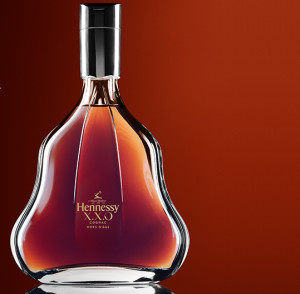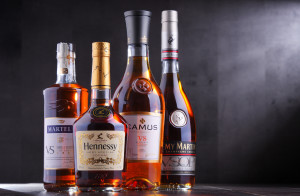
photo via: https://www.hennessy.com/fr-fr
According to France’s Institut National de l’Origine et de la Qualité (INAO), as of December 6, 2018, Cognac has a new “official” aging classification!
Here is the new law, straight from the update of the Cahier des Charges: “Les mentions ‘XXO’ et ‘Extra Extra Old’ sont des mentions spécifiques dont les eaux-de-vie présentent un vieillissement égal ou supérieur à 14 ans.”
Translation: According to the INAO, the initialism “XXO” or the term “Extra Extra Old” is a newly-approved aging designation for use on bottles of Cognac where the youngest spirit in the bottle is 14 years old.
For now, while we’re talking about cognac, here are a few other fascinating facts about Cognac:
A corner of paradise: In some cellars, the oldest cognacs are put into demi-johns (large glass containers designed to allow the aging process to continue without air contact and the annual evaporative loss experienced via wooden barrels). These oldest-of-the-old spirits are often kept in a separate, dark corner of the cellar sometimes referred to as un coin de paradis (“a corner of paradise”).

.
What a history: According to archaeological records, the area around Charente was planted with vineyards, and well-known for wine production as early as the first century CE. The wines of the area—particularly those from the port of Poitou—were first sold to Dutch interests (along with salt from the Atlantic Coast). By the 15th century, the Dutch had begun to distill the wines of Charente in order to preserve them during the long ocean voyages.
The trade takes off: Many cognac firms are more than 200 years old. For example, Martell was founded in 1715, Rémy Martin in 1724, Delamain in 1759, Hennessy in 1765, Godet in 1782, and Courvoisier in 1843. On January 23, 1860, a landmark trade treaty was signed between England and France (under the auspices of Napoleon III), and soon thereafter the trading of Cognac expanded exponentially.
The legislation: Cognac was among the first “batch” of six wine-and-spirit AOCs approved by the INAO on May 15, 1936. The geographical boundaries of the defined Cognac region had been legally defined a few decades earlier, in 1909. In 1938, the six geographical designations (crus) – Grande Champagne, Petite Champagne, Borderies, Fins Bois, Bons Bois, and Bois Ordinaires – were added to the Cahier des Charges.
References/for more information:
- Cahier des Charges AOC Cognac updated December 6 2018
- http://cognac.fr/cognac/_fr/2_cognac/index.aspx?page=actualite&id=7687&fbclid=IwAR0Nbo_tOjTF9tEkpYJ9rBMo442eChuIPU2pj0DEPciTrPhYaJz9hWBbqE0
- http://cognac.fr/cognac/_fr/2_cognac/index.aspx?page=vieillissement
- https://www.thedrinksbusiness.com/2018/01/hennessy-x-x-o-cognac-still-suspended/
Post authored by Jane A. Nickles, your blog administrator…
Great 👍👍 thanks
thanks